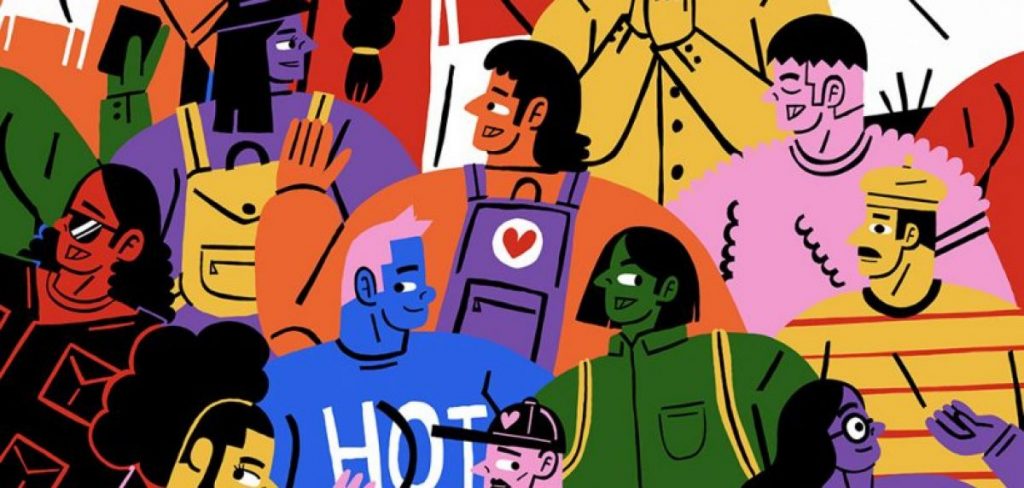Reflections from the films and readings:
What I got from this talk by Kwame Anthony Appiah was that there is no point in arguing whether a religion is good or bad as all religions has examples of both. It is more helpful to focus on the power structures behind religions and the people who wield them and to what benefit.
One thought I had in relation to Kwame’s story of King Rattray, who is presented as someone who thought his actions were purely religious, but they were of course also political. The idea that people put faith in traditions to uphold their sense of reality feels valid today, I think the way people uphold traditional ways of operating within an institution often think that their world will crumble if they were to change their ways. Maybe it would? But maybe that would be a good thing?
Haifaa Jawads essay about “the case of visible Muslim women” was an interesting read.
She explains that many modern-day views on Muslim women (and men) come from a “lack of knowledge and understanding of each other’s lives” (Jawad, H 2022). On a personal level I can draw many parallels to how my experience as a queer person often faces hostility due to people simply not knowing anything about me. This feels very aligned with my goals for my intervention, which I hope can lead to students getting to know each other and filling gaps in knowledge together.
In this essay, she presents dressing and presenting in certain ways as a form of “embodiment of faith”. I know faith often has a religious connotation, but I cannot help to connect that to how I or other queer people choose to present publicly. When I dress colorfully, color my hair or paint my nails I often think of that as me embodying my faith or belief in queerness. I need to continue reflecting on this, but I think it could be quite helpful to use the idea of an embodiment in my intervention. Maybe for unit 3?
Simran Jeet Singh talks about his education practice in America and how he acknowledges the country’s colonial and racist history and how it is still prominent today. He is frank about the urgency and importance of holding these discussions alive in the classroom, and how we can do that by including examples and dissecting the multiple ways people look at social issues.
He appears to have practice within political studies, so I am trying to reflect on how to do this within an illustration context. An example could be by showing a piece of my work (which is incredibly homosexual and graphic) and explain who would find joy in this work and with honesty explaining that this work angers some to the point of threatening with violence against me and my community. Not a finished thought.
These were the most prominent reflections I had from the references.
Blibliography:
Appiah, K. A. (2014) Is religion good or bad? (This is a trick question). Youtube [Online]. 16 June. Available at: https://www.youtube.com/watch?v=X2et2KO8gcY
Jawad, H. (2022) Islam, Women and Sport: The Case of Visible Muslim Women. [Online]. Available at: https://blogs.lse.ac.uk/religionglobalsociety/2022/09/islam-women-and-sport-the-case-of-visible-muslim-women/
Trinity University (2016) Challenging Race, Religion, and Stereotypes in the Classroom. [Online]. Available at: https://www.youtube.com/watch?v=0CAOKTo_DOk

I enjoyed your interpretation of Appiah’s talk regarding the influences upon religion from external factors and how this can lead to different interpretations.
Interesting insight with the ‘embodiment of faith’ with the ‘embodiment of sexuality’ and being a visibly muslim or a visibly queer person.
Thank you Charlie.
Hi Fred,
This was an inciteful and interesting read.
Your observations on Jawad’s essay resonate clearly, I agree whole-heartedly with the statement that ‘it is often a lack of knowledge and understanding of each other’s lives’ (Muslim women and men) that influences our broader understanding and perceptions of ‘who’ we are and ‘what’ we are – visibly.
I am interested in how you describe and relate your own personal visible identity within this context, and I’ll be excited to see how this approach to physical embodiment aligns and manifests as part of your intervention – and possibly the ARP going forwards.
Thank you for sharing.
Thank you Kelly!
Growing up in Hong Kong, I was never taught about LGBT topics, traditional gender roles were the norm. Only when I moved to the UK in 2008 + started working at UAL, I was introduced to broader ideas around gender and sexuality.
I realised that Hong Kong media had already touched on these themes in the 90s. For example, the film “He’s a Woman, She’s a Man (1994)” challenged heteronormativity, but I only discovered it a few years ago. It made me reflect on how families, media, and society often suppress alternative narratives to maintain tradition, something that echoes your point about how people fear change as if their world would crumble. (Really love that part you wrote)
I also found your thoughts on “embodiment of faith” interesting. The idea is that personal style can express identity and belief, using self-presentation as a form of communication. Your reflection reminded me how important it is to make space for these expressions in creative education and to recognise their background and meaning.
Thank you Herman!
I am definitely noting down that movie. Might be an interesting watch.